High-Performance Tandem White Micro-OLEDs for Virtual Reality and Mixed Reality Displays
Abstract
1. Introduction
2. System Modelling
2.1. Tandem WOLED Microdisplay
2.2. Pancake Optical System
3. Analysis and Optimization
3.1. B/YG Tandem WOLED
3.2. B/G/R Tandem WOLED
4. Conclusions and Future Perspectives
Author Contributions
Funding
Data Availability Statement
Conflicts of Interest
References
- Tang, C.W.; VanSlyke, S.A. Organic Electroluminescent Diodes. Appl. Phys. Lett. 1987, 51, 913–915. [Google Scholar] [CrossRef]
- Baldo, M.A.; Lamansky, S.; Burrows, P.E.; Thompson, M.E.; Forrest, S.R. Very High-Efficiency Green Organic Light-Emitting Devices Based on Electrophosphorescence. Appl. Phys. Lett. 1999, 75, 4–6. [Google Scholar] [CrossRef]
- Hsiang, E.-L.; Yang, Z.; Yang, Q.; Lai, P.-C.; Lin, C.-L.; Wu, S.-T. AR/VR Light Engines: Perspectives and Challenges. Adv. Opt. Photonics 2022, 14, 783–861. [Google Scholar] [CrossRef]
- Yang, Z.; Hsiang, E.L.; Qian, Y.; Wu, S.T. Performance Comparison between Mini-LED Backlit LCD and OLED Display for 15.6-Inch Notebook Computers. Appl. Sci. 2022, 12, 1239. [Google Scholar] [CrossRef]
- Yang, Z.; Qian, Y.; Zou, J.; Lee, C.-L.; Lin, C.-L.; Wu, S.-T. Reducing the Power Consumption of VR Displays with a Field Sequential Color LCD. Appl. Sci. 2023, 13, 2635. [Google Scholar] [CrossRef]
- Ghosh, A.; Donoghue, E.P.; Khayrullin, I.; Ali, T.; Wacyk, L.; Tice, K.; Vazan, F.; Prache, O.; Wang, Q.; Sziklas, L.; et al. 18-1: Invited Paper: Ultra-High-Brightness 2K x 2K Full-Color OLED Microdisplay Using Direct Patterning of OLED Emitters. SID Symp. Dig. Tech. Pap. 2017, 48, 226–229. [Google Scholar] [CrossRef]
- Kim, C.; Kim, K.; Kwon, O.; Jung, J.; Park, J.K.; Kim, D.H.; Jung, K. Fine Metal Mask Material and Manufacturing Process for High-Resolution Active-Matrix Organic Light-Emitting Diode Displays. J. Soc. Inf. Disp. 2020, 28, 668–679. [Google Scholar] [CrossRef]
- Motoyama, Y.; Sugiyama, K.; Tanaka, H.; Tsuchioka, H.; Matsusaki, K.; Fukumoto, H. High-Efficiency OLED Microdisplay with Microlens Array. J. Soc. Inf. Disp. 2019, 27, 354–360. [Google Scholar] [CrossRef]
- Liao, L.S.; Klubek, K.P.; Tang, C.W. High-Efficiency Tandem Organic Light-Emitting Diodes. Appl. Phys. Lett. 2004, 84, 167–169. [Google Scholar] [CrossRef]
- Guo, F.; Ma, D. White Organic Light-Emitting Diodes Based on Tandem Structures. Appl. Phys. Lett. 2005, 87, 173510. [Google Scholar] [CrossRef]
- Xiao, P.; Huang, J.; Yu, Y.; Liu, B. Recent Developments in Tandem White Organic Light-Emitting Diodes. Molecules 2019, 24, 151. [Google Scholar] [CrossRef] [PubMed]
- Cho, H.; Byun, C.-W.; Kang, C.-M.; Shin, J.-W.; Kwon, B.-H.; Choi, S.; Cho, N.S.; Lee, J.-I.; Kim, H.; Lee, J.H.; et al. White Organic Light-Emitting Diode (OLED) Microdisplay with a Tandem Structure. J. Inf. Disp. 2019, 20, 249–255. [Google Scholar] [CrossRef]
- Chen, Y.; Ma, D. Organic Semiconductor Heterojunctions as Charge Generation Layers and Their Application in Tandem Organic Light-Emitting Diodes for High Power Efficiency. J. Mater. Chem. 2012, 22, 18718–18734. [Google Scholar] [CrossRef]
- Kopin Corporation’s OLED Microdisplay Success Highlighted in Industry Research. Available online: https://www.kopin.com/press-releases/kopin-corporations-oled-microdisplay-success-highlighted-in-industry-research/ (accessed on 10 March 2024).
- Hamer, J.; Kondakova, M.; Spindler, J.; Cupello, R.; Hamer, S.; Andre, M.; McClurg, S.; Pleten, A.; Primerano, B.; Scott, D.; et al. High-Performance OLED Microdisplays Made with Multi-Stack OLED Formulations on CMOS Backplanes. Proc. SPIE 2020, 11473, 114730F. [Google Scholar]
- Haas, G. 52-1: Invited Paper: Microdisplays for Wearable Augmented Reality—OLED vs LED Based Systems (Invited). SID Symp. Dig. Tech. Pap. 2019, 50, 713–716. [Google Scholar] [CrossRef]
- Lin, C.-C.; Wu, Y.-R.; Kuo, H.-C.; Wong, M.S.; DenBaars, S.P.; Nakamura, S.; Pandey, A.; Mi, Z.; Tian, P.; Ohkawa, K.; et al. The Micro-LED Roadmap: Status Quo and Prospects. J. Phys. Photonics 2023, 5, 042502. [Google Scholar] [CrossRef]
- Kim, S.K.; Park, M.J.; Lampande, R.; Jung, S.W.; Park, H.; Jeong, J.K.; Kwon, J.H. Primary Color Generation from White Organic Light-Emitting Diodes Using a Cavity Control Layer for AR/VR Applications. Org. Electron. 2020, 87, 105938. [Google Scholar] [CrossRef]
- Chen, Z.; Li, H.; Yuan, C.; Gao, P.; Su, Q.; Chen, S. Color Revolution: Prospects and Challenges of Quantum-Dot Light-Emitting Diode Display Technologies. Small Methods 2024, 8, 2300359. [Google Scholar] [CrossRef] [PubMed]
- Matsushima, T.; Bencheikh, F.; Komino, T.; Leyden, M.R.; Sandanayaka, A.S.D.; Qin, C.; Adachi, C. High Performance from Extraordinarily Thick Organic Light-Emitting Diodes. Nature 2019, 572, 502–506. [Google Scholar] [CrossRef] [PubMed]
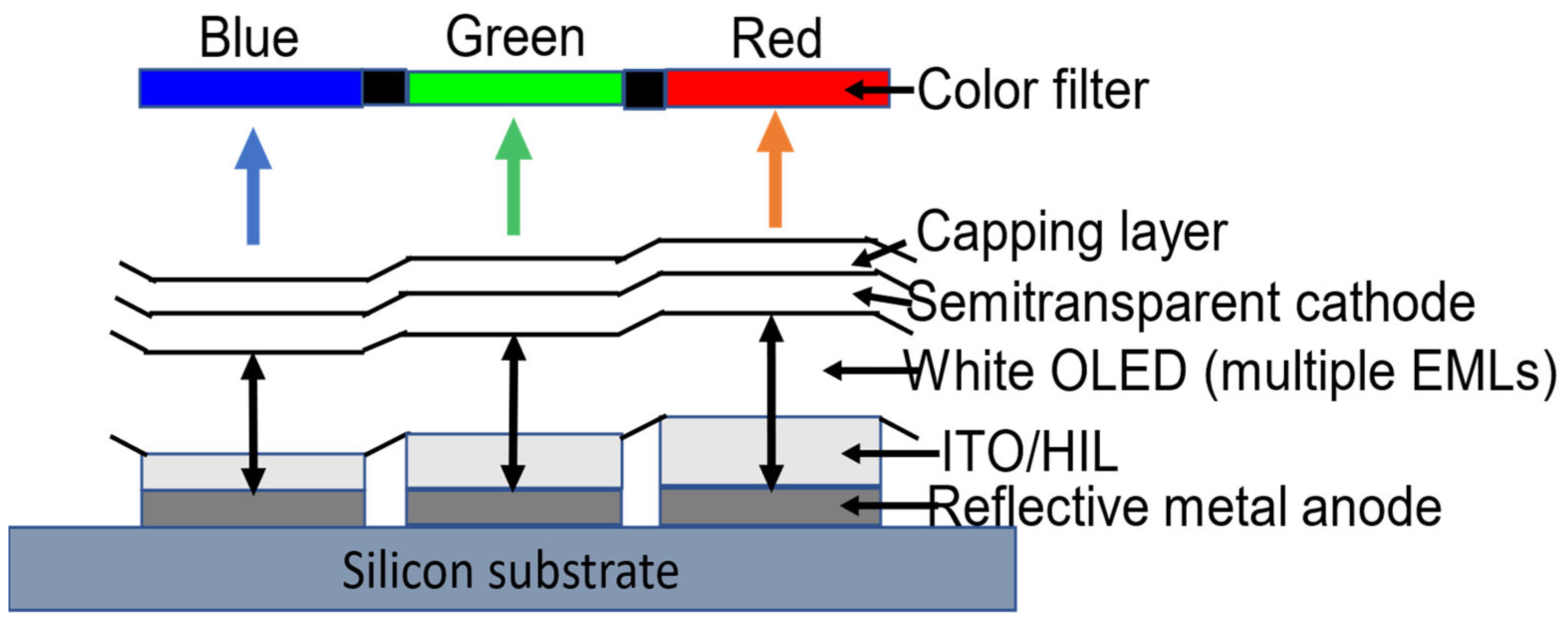
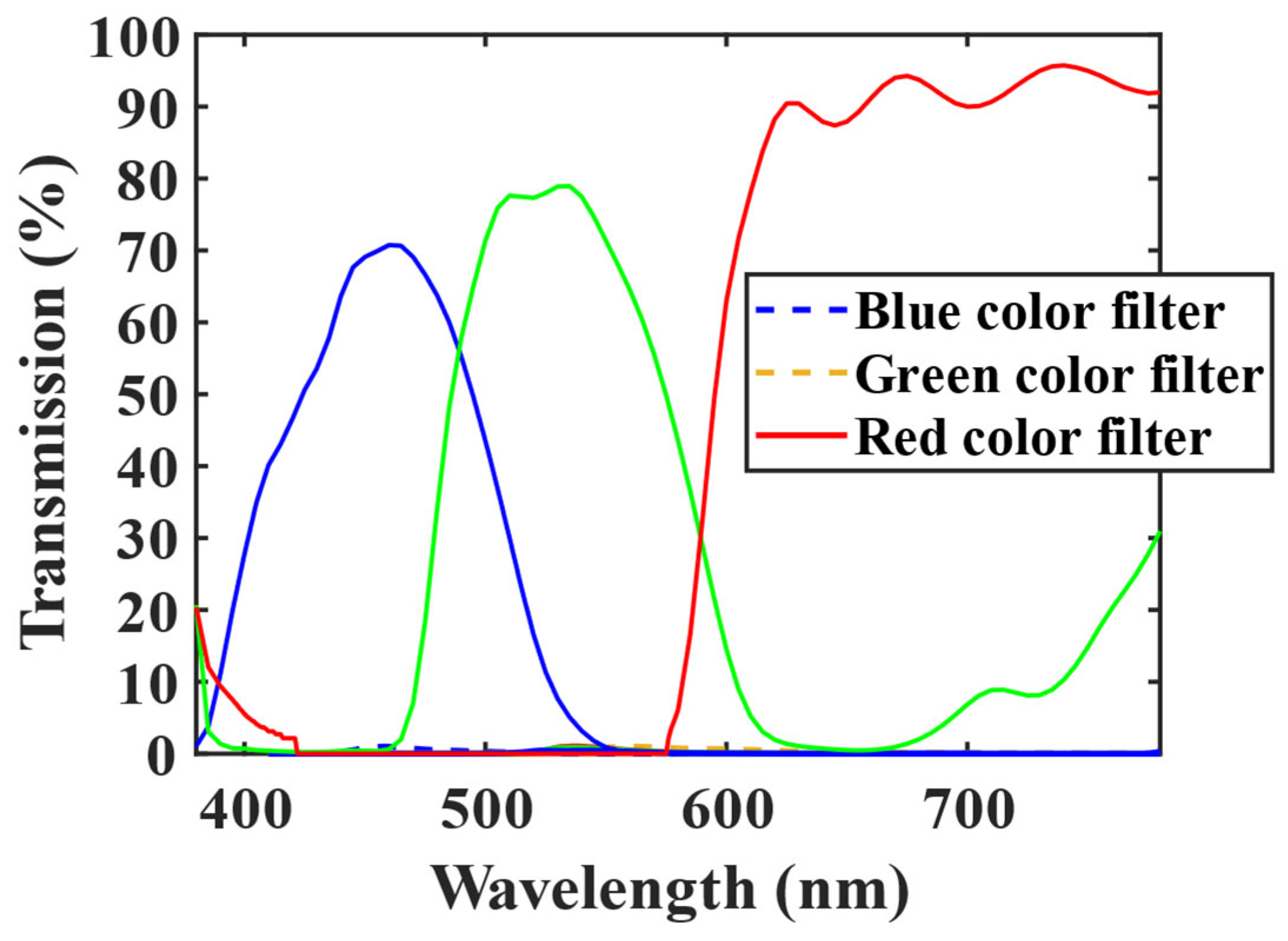
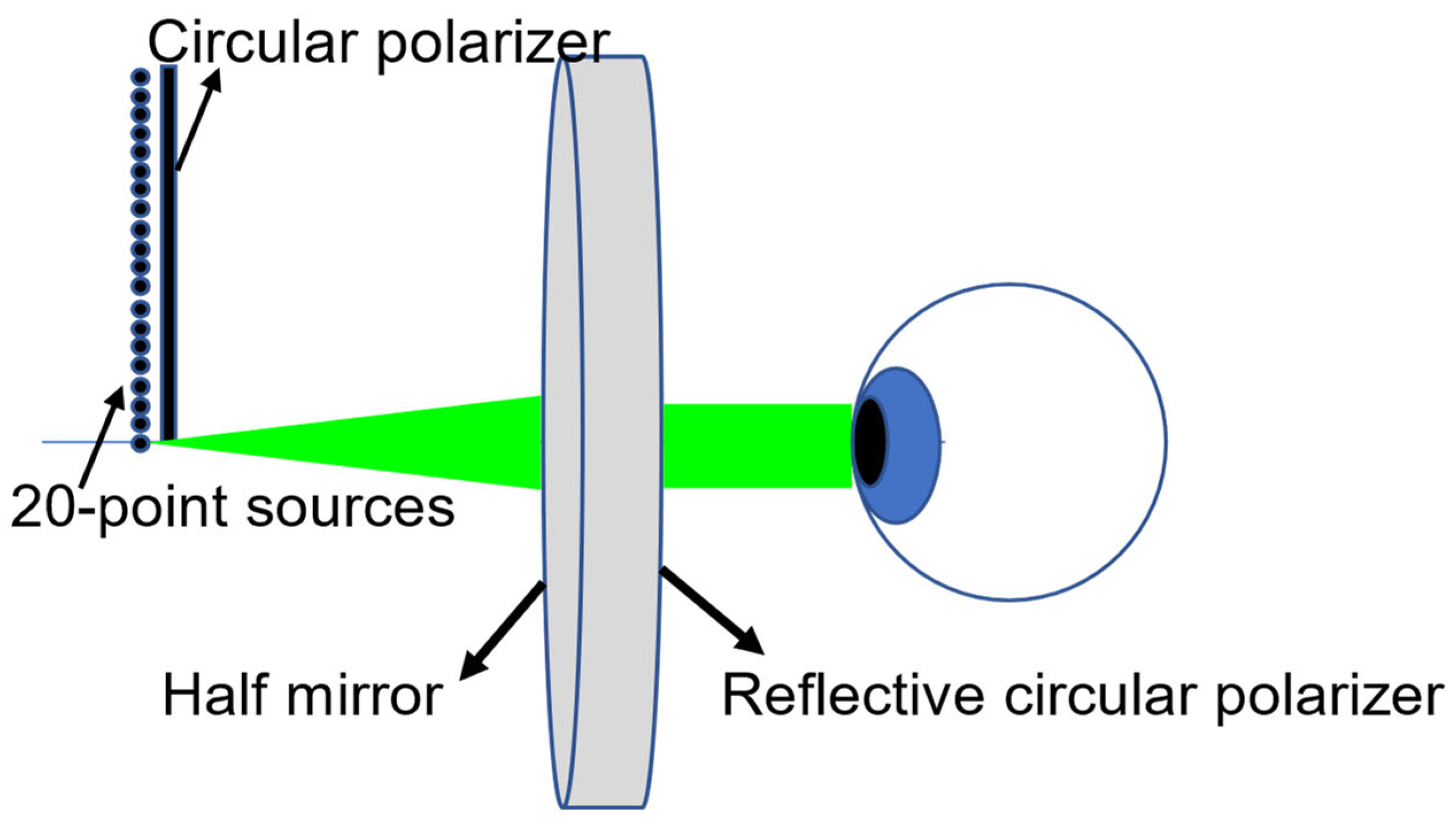
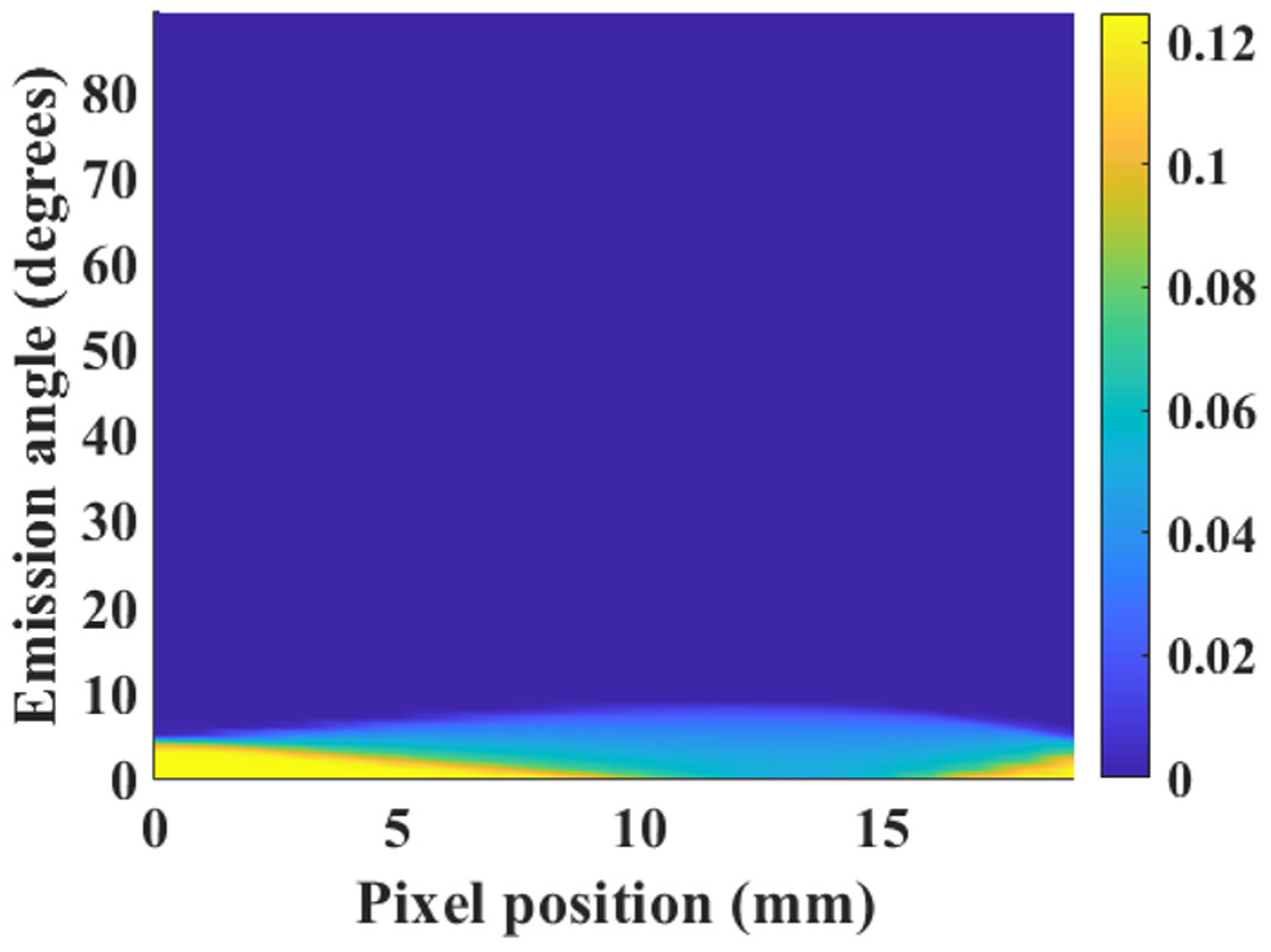

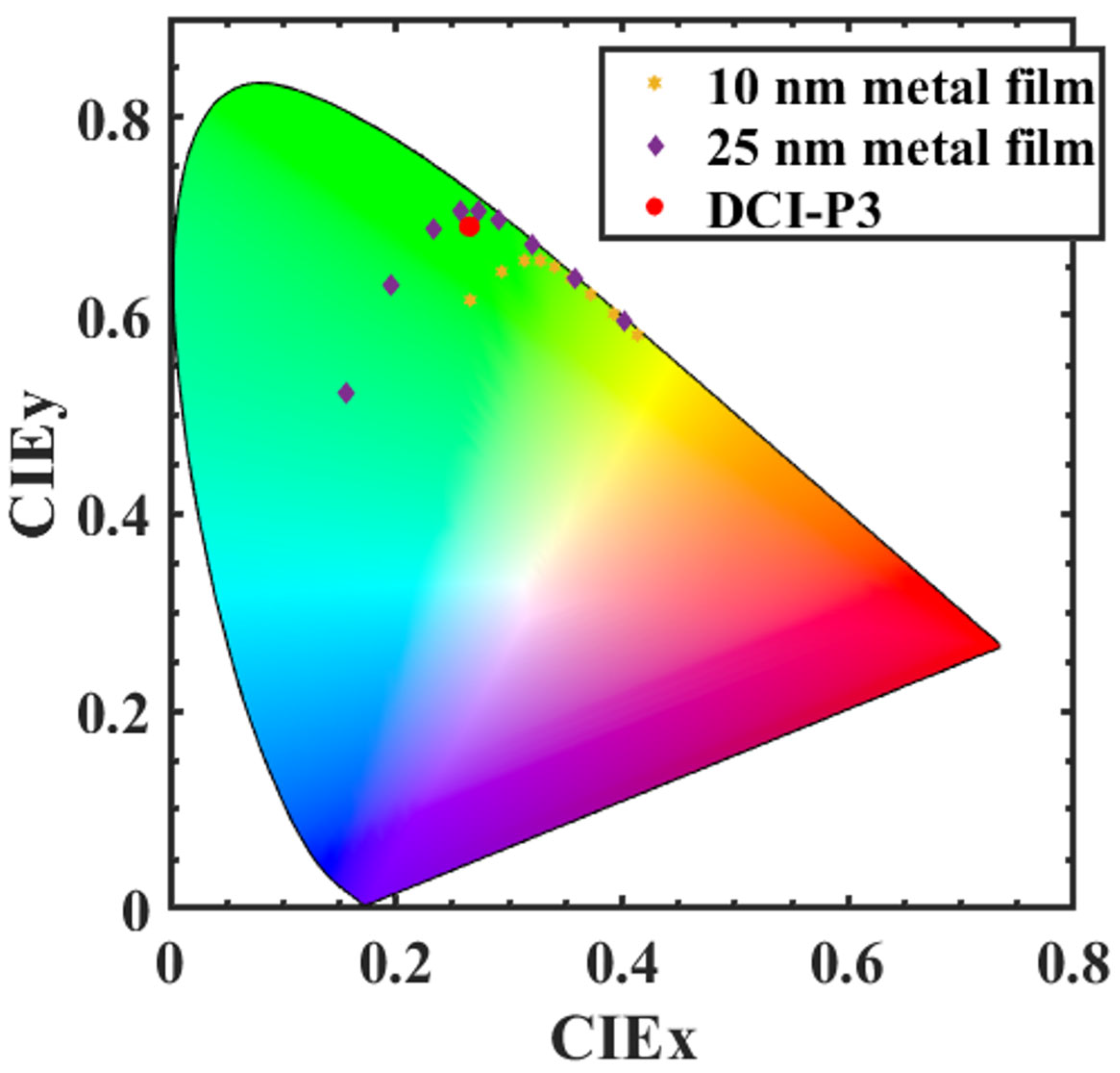
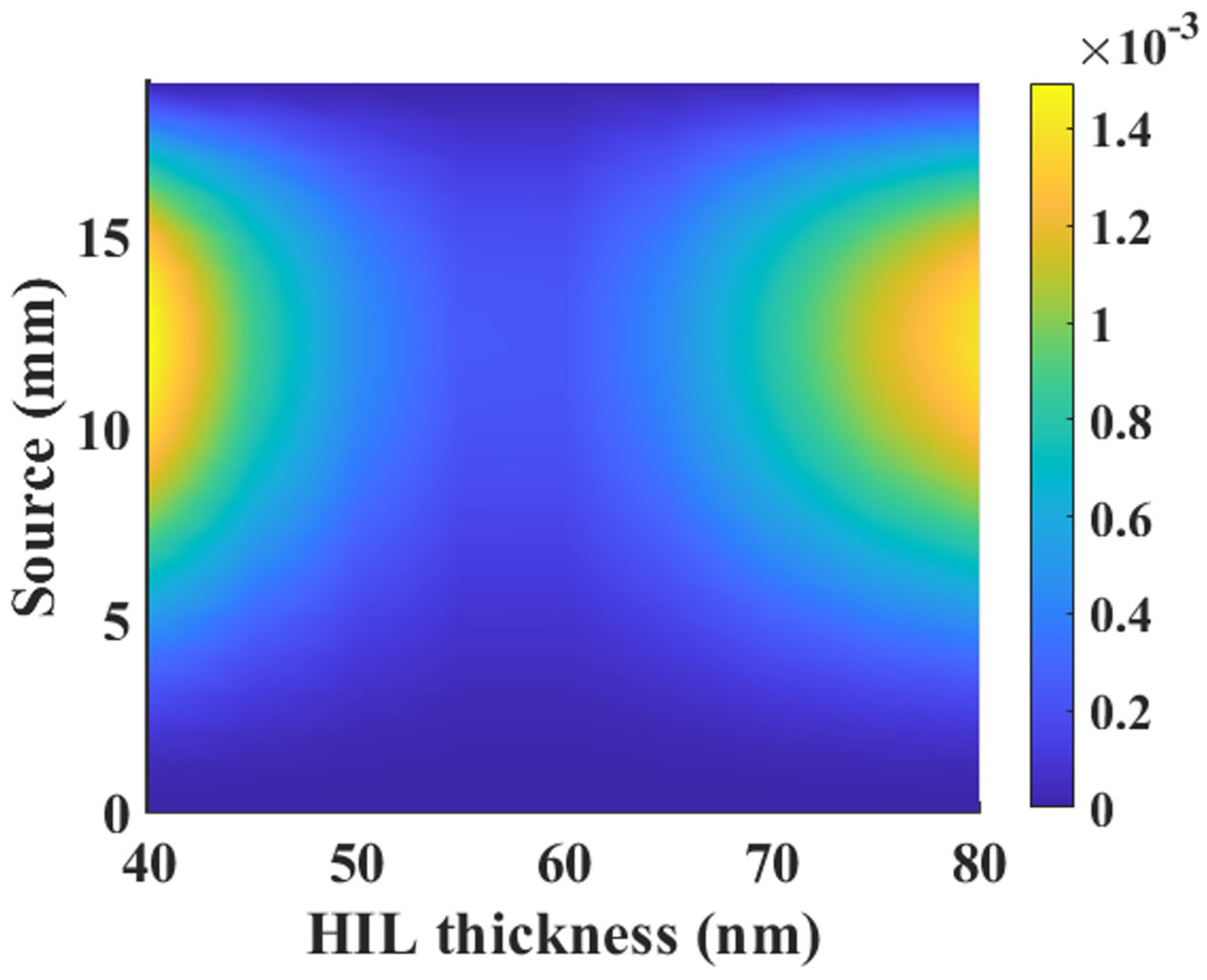
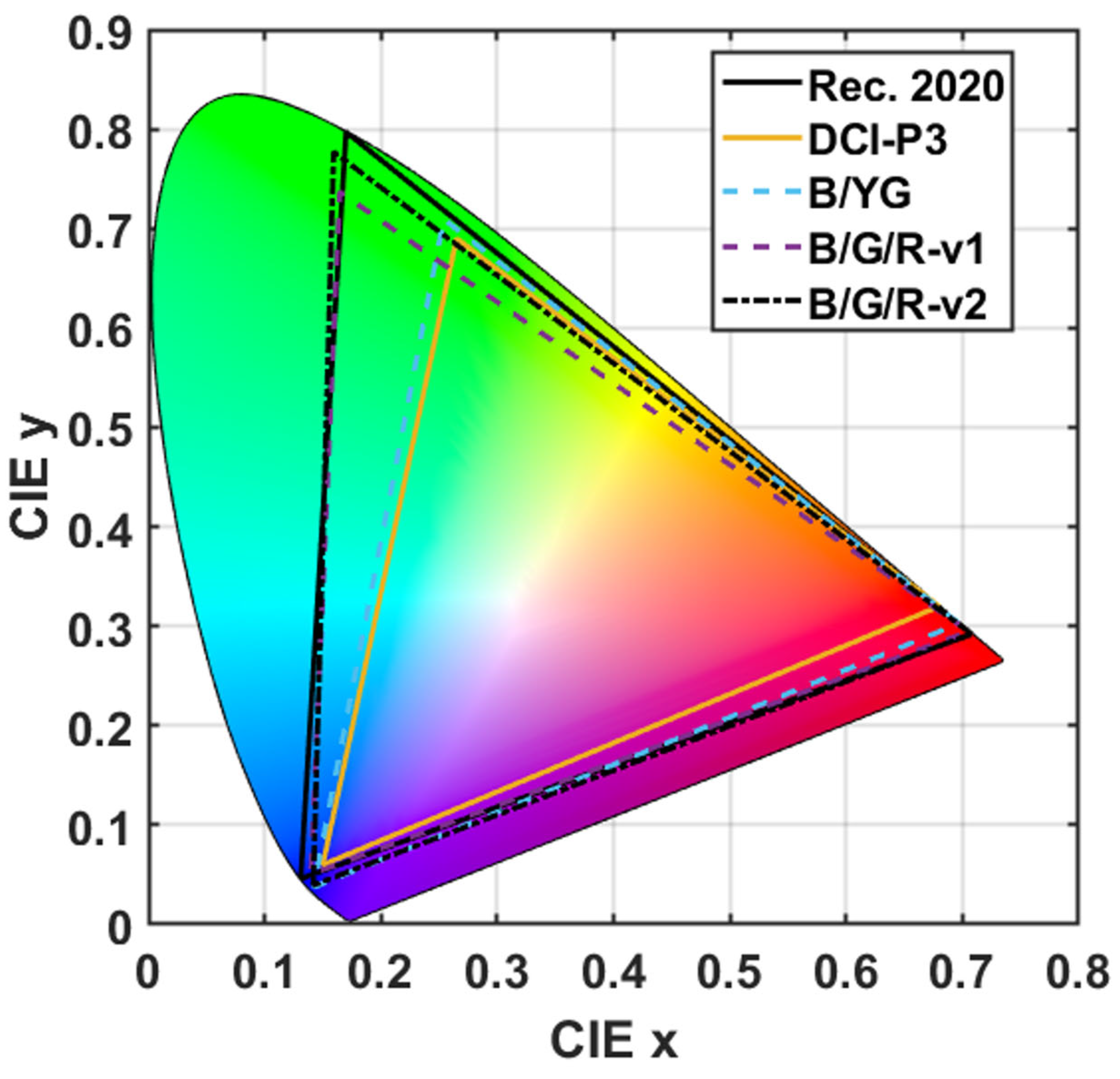
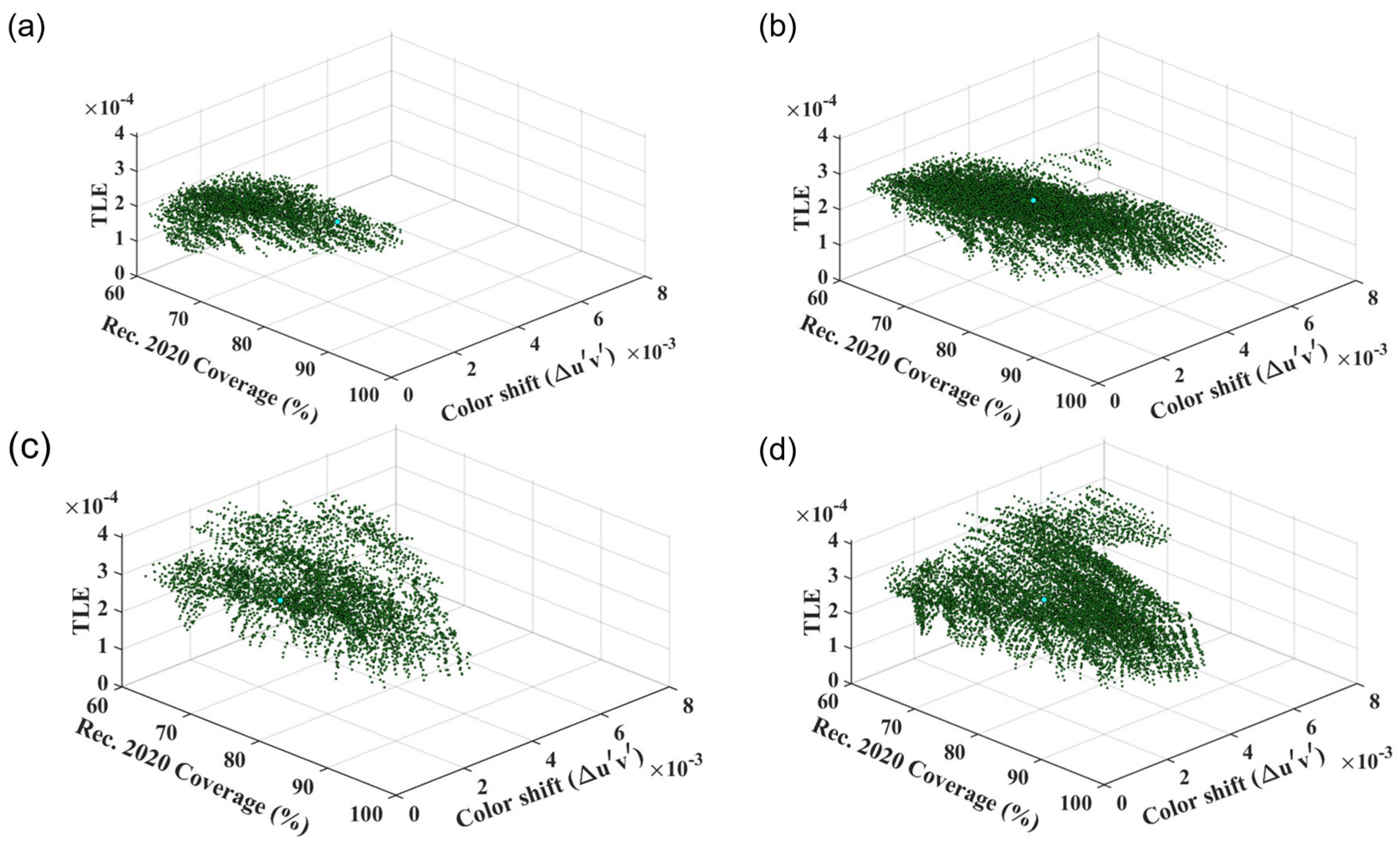
Disclaimer/Publisher’s Note: The statements, opinions and data contained in all publications are solely those of the individual author(s) and contributor(s) and not of MDPI and/or the editor(s). MDPI and/or the editor(s) disclaim responsibility for any injury to people or property resulting from any ideas, methods, instructions or products referred to in the content. |
© 2024 by the authors. Licensee MDPI, Basel, Switzerland. This article is an open access article distributed under the terms and conditions of the Creative Commons Attribution (CC BY) license (https://creativecommons.org/licenses/by/4.0/).
Share and Cite
Yang, Z.; Hsiang, E.-L.; Wu, S.-T. High-Performance Tandem White Micro-OLEDs for Virtual Reality and Mixed Reality Displays. Crystals 2024, 14, 332. https://doi.org/10.3390/cryst14040332
Yang Z, Hsiang E-L, Wu S-T. High-Performance Tandem White Micro-OLEDs for Virtual Reality and Mixed Reality Displays. Crystals. 2024; 14(4):332. https://doi.org/10.3390/cryst14040332
Chicago/Turabian StyleYang, Zhiyong, En-Lin Hsiang, and Shin-Tson Wu. 2024. "High-Performance Tandem White Micro-OLEDs for Virtual Reality and Mixed Reality Displays" Crystals 14, no. 4: 332. https://doi.org/10.3390/cryst14040332
APA StyleYang, Z., Hsiang, E.-L., & Wu, S.-T. (2024). High-Performance Tandem White Micro-OLEDs for Virtual Reality and Mixed Reality Displays. Crystals, 14(4), 332. https://doi.org/10.3390/cryst14040332






